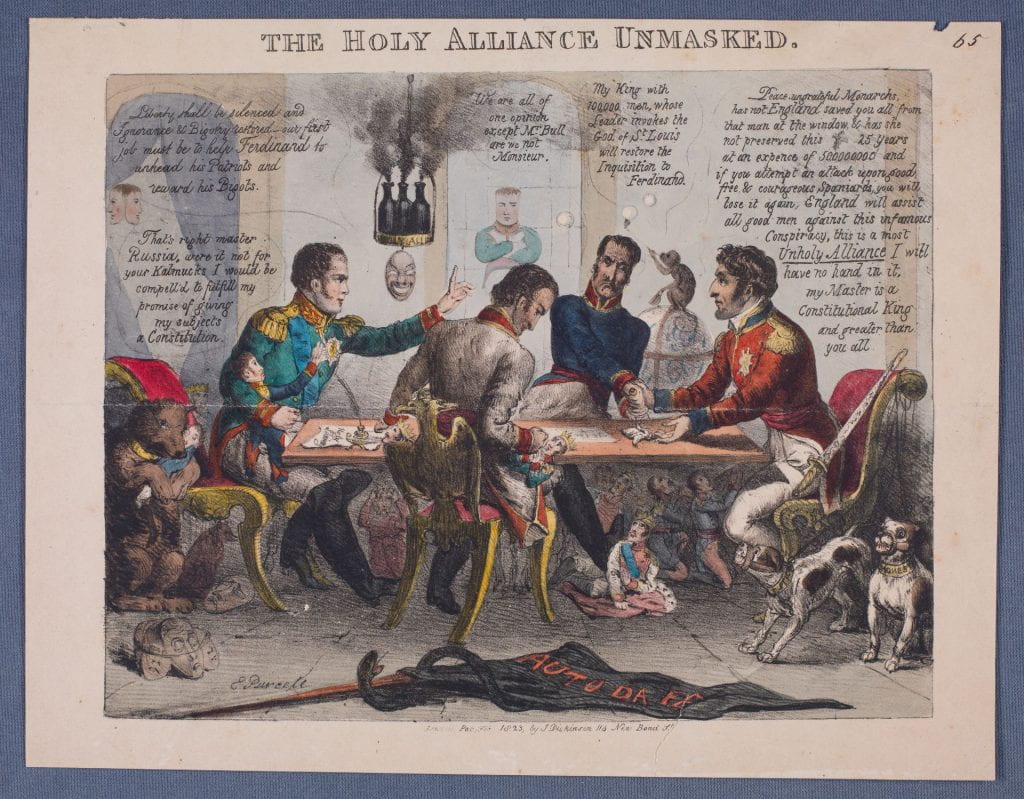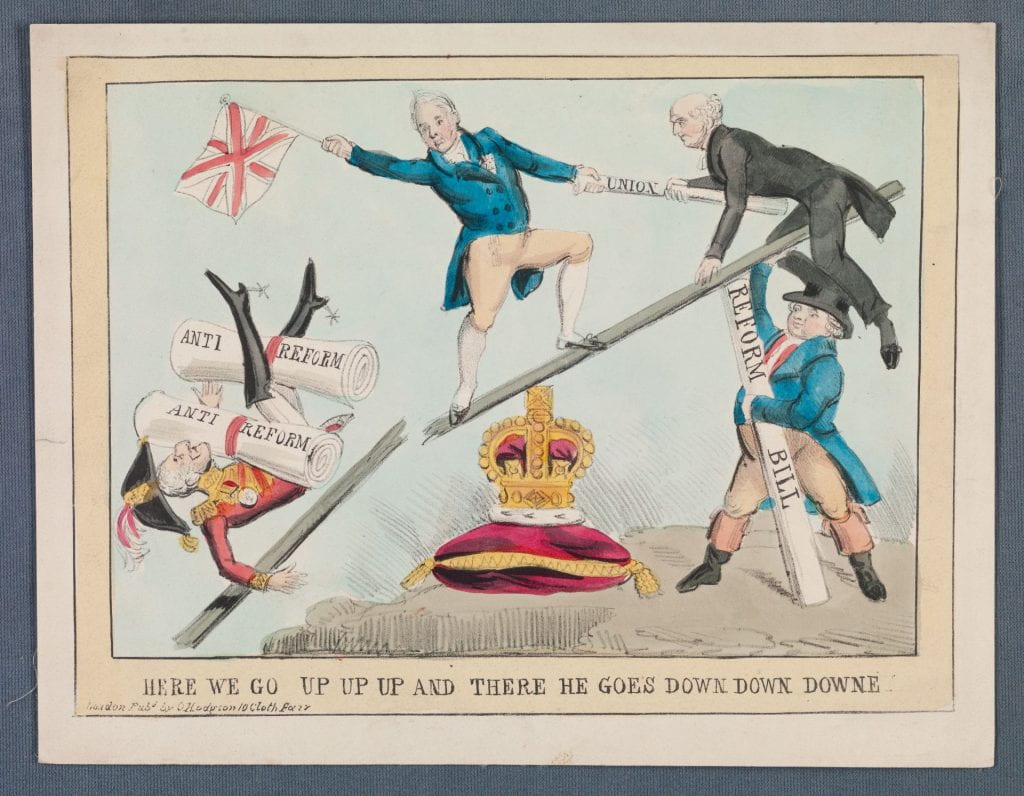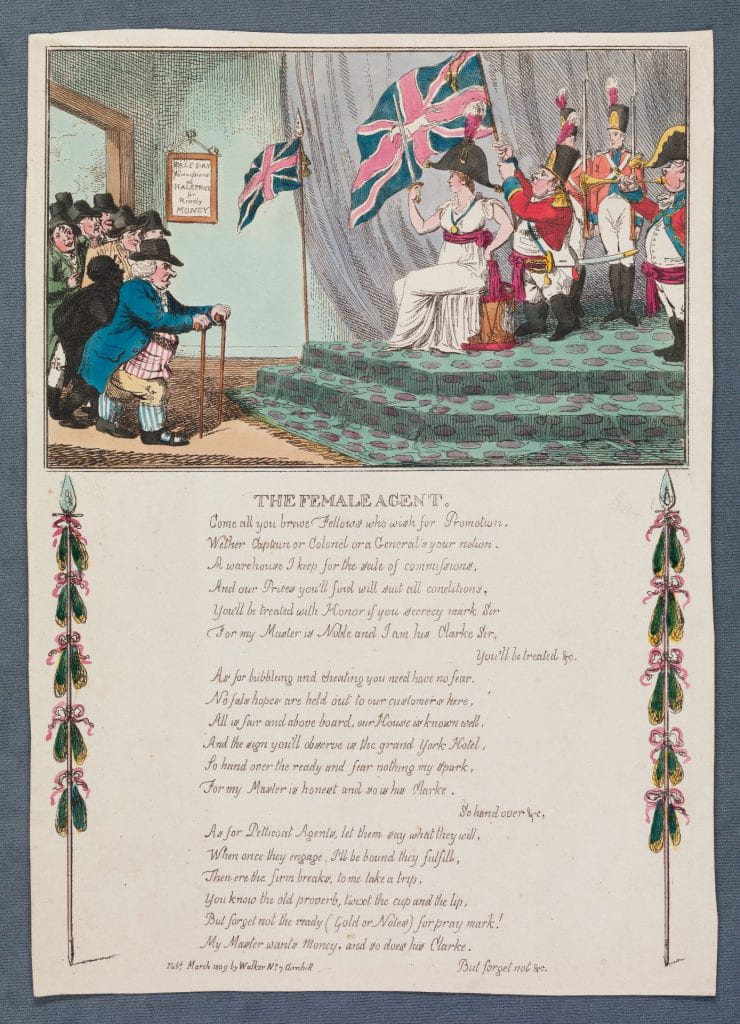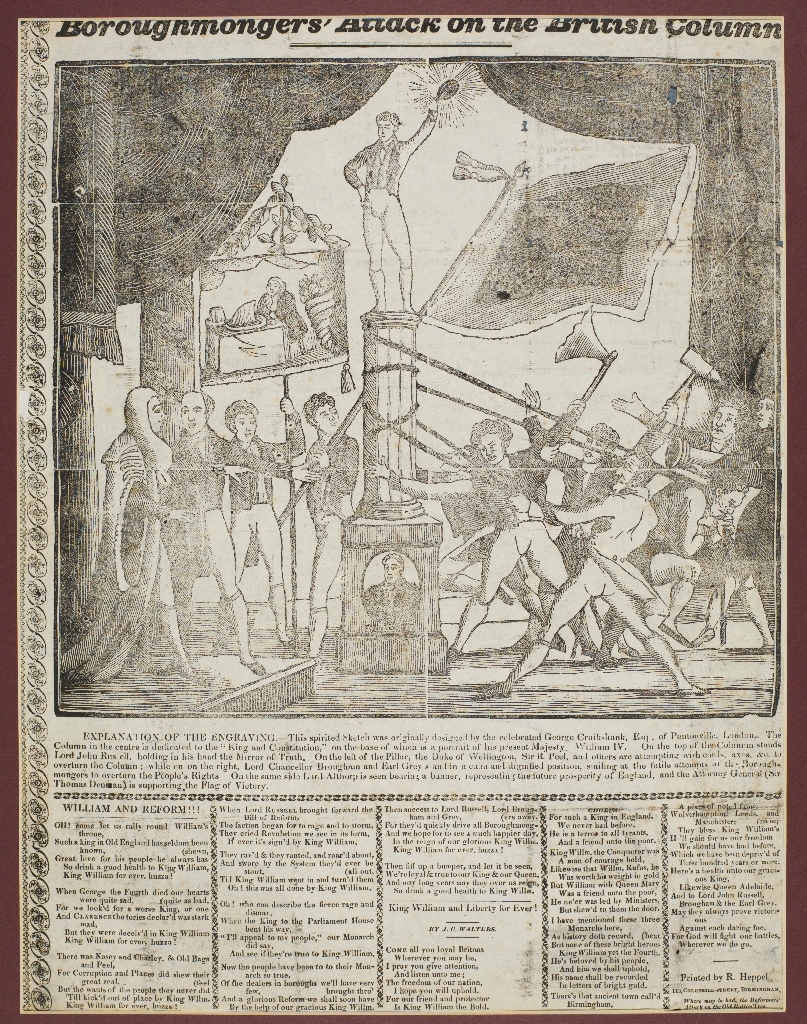
“Napoleon, pushing an officer before him through a pillared doorway, looks back to speak to a monk and a sansculotte, shackled together, who drag a car in which is an imperial crown. They hold a large scroll inscribed: ‘Most religious Sovereign – the benefactor of the church – the patron of liberty – the scourge of tyrants, and the defender of our most holy religion; may you long fill the Imperial Chair, and diffuse over a free and happy people all the blessings of your auspicious government.’ Demons fly round a tricolour flag which floats from the car. Napoleon holds out a scroll headed: ‘Address, &c. &c. &c. The Legions of France congratu – ‘, saying, “This token of your gratitude, my dear subjects will ever stimulate me to protect your liberties – to promote your happiness – and to preserve my empire from the ravages of war, tyranny and oppression.” The officer, with a cynical smile, says: “Patron of Liberty – Defender of our most holy Religion – free and happy People – Ha! ha! ha! – What may we not expect? – Has he not got them under excellent subjection?” On the left is Napoleon’s ‘Secret Chamber’: a table is covered with maps and plans; a large map, partly unrolled, shows Europe from ‘[En]gland to [Tur]key’, including the ‘Black Sea’; another map shows ‘Suez’ and the ‘Red Sea’. A demon under the table holds up a large pile of papers: ‘Plans against England’; on the floor are similar piles: ‘Religion’ and ‘Treaties’. There are also ‘Plans against Germany and Turkey’, and a paper: ‘Mem. the chance of the conquest of England is worth the sacrifice of one third of the people of France. Item. As Charlemaine not only conquered Italy, but the whole of Germany, and left the Imperial dignity hereditary in the Sovereigns of France, it is indispensably necessary to obtain possession of Germany, in order to support the dignity of the Gallic empire.’ On the wall are three pictures: ‘Sacking of Rome’, ‘Dissolution of the National Assembly’ [see British Museum Satires No. 9426, &c], and ‘View of Cairo’ [see British Museum Satires No. 9358, &c.]. Below the design: ‘Explanation. The two figures bringing the Imperial crown . . . represent . . . the bitter Enemies of Aristocracy, and the staunch Supporters of the late Monarchial Government, tackled to the National Machine, and reduced to the most abject State of Slavery by the Influence of the Military, whose congratulatory Address Bonaparte has received at the Hand of an Officer, and is introducing him into his Secret Chamber to receive Instructions. The Demons hovering over the Imperial Crown denote Five Years of Destruction; during which Period Bonaparte will overrun and ravage the greater Part of the Continent of Europe, be the Means of nearly depopulating Turkey, and finally be slain with the Sword, be cast out as an abominable Branch, and be left as Dung to rot on the Face of the Earth.”–British Museum online catalogue.
- Title: A representation of the present state of France [graphic].
- Publication:[London] : Published by L. Mayer, as the act directs, August 13, 1804.
- Manufacture: [London] : Bryer, printer, Bridge Street, Blackfriars
Catalog Record
804.08.13.01+
Acquired May 2021





